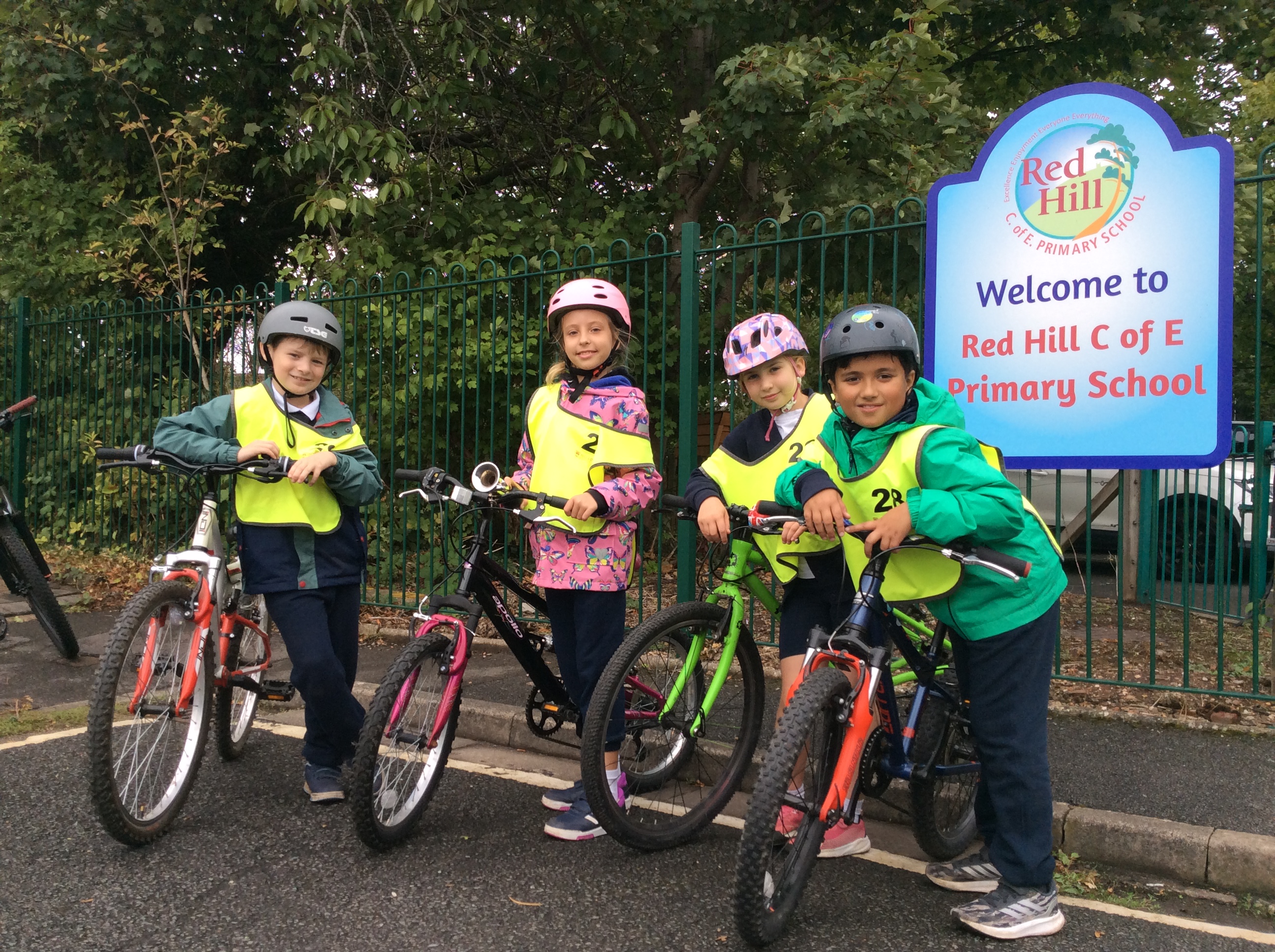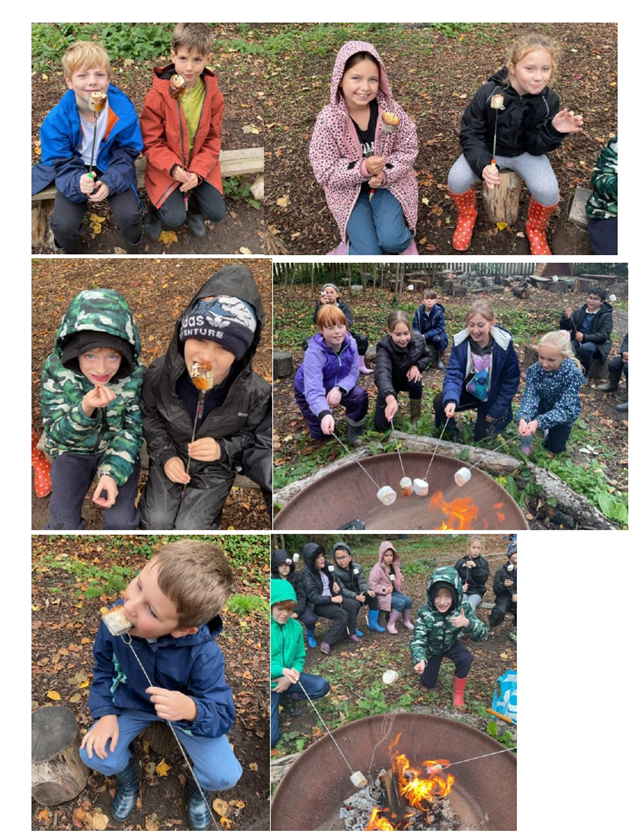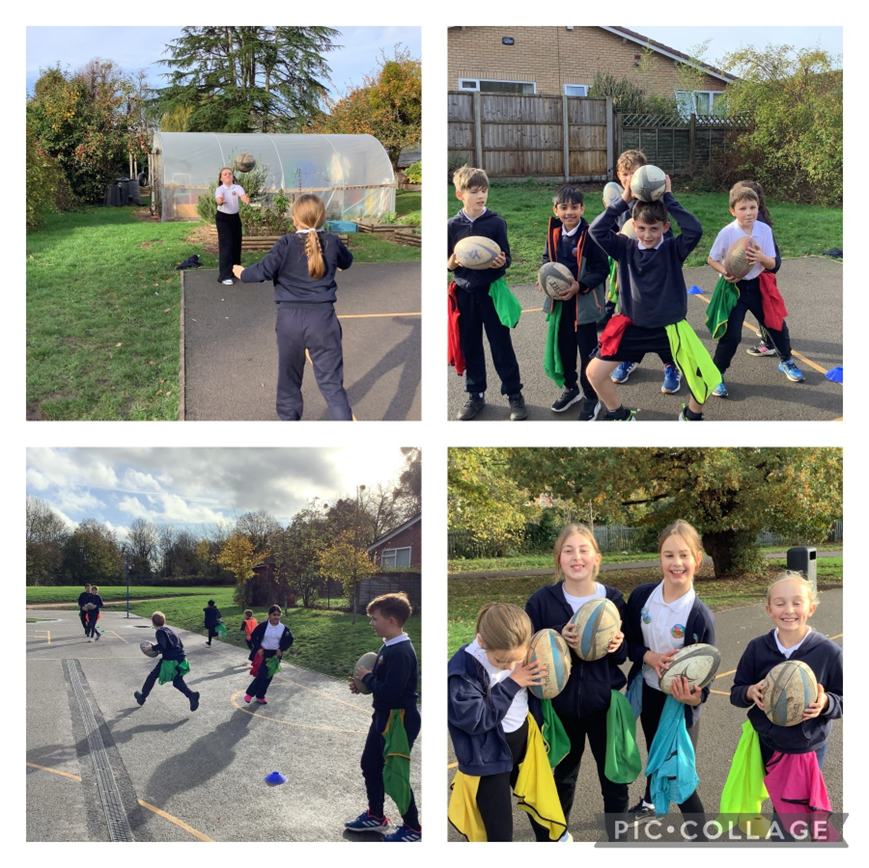Year 5
Welcome to Year 5!
This term promises to be an exciting and engaging time for Year 5. On this page, you will find summaries of our learning sequences. These overviews are designed to give you a clear picture of the skills and knowledge your child will be developing, as well as the texts and questions that will inspire their learning this term.
If you have any questions about your child’s learning, please do not hesitate to contact your class teacher.


5PB (Mrs Ballinger) - pballinger@redhill.worcs.sch.uk 5AN (Miss Nelson) - anelson@redhill.worcs.sch.uk
Year 5's Autumn Term
English
English writing text 1: The Tear Thief
Purpose: To entertain
In this writing sequence, we will be focusing on entertaining our readers through storytelling. Using the text The Tear Thief by Carol Ann Duffy as inspiration, the children will plan and write their own innovated versions of the story.
To develop their narrative writing, children will practise the following key skills:
- Using expanded noun phrases to add rich detail about characters.
- Including subordinate clauses to give additional information and depth.
- Applying commas in parenthesis to clarify meaning within a sentence.
- Organising writing into paragraphs that follow the story in time sequence.
- Beginning sentences with adverbials to vary structure and guide the reader.
This unit will help children to refine their descriptive writing, while also giving them the chance to be imaginative and creative as they bring their own versions of The Tear Thief to life.
English writing text 2: The Day the Crayons Quit
Purpose: To complain
This term in English, we are exploring the much-loved text The Day the Crayons Quit by Drew Daywalt. Using this story as our inspiration, the children will be learning how to write letters that are engaging, persuasive, and carefully structured. Our focus will be on developing key writing skills, including:
- Setting out letters correctly, with a clear address for both the sender and the recipient.
- Opening letters with an effective introduction, explaining the reason for writing.
- Building cohesion within paragraphs, so ideas flow smoothly and logically.
- Using facts to support and emphasise points, making arguments more convincing.
- Choosing rich and varied vocabulary to create a more formal tone where needed.
- Applying adverbials with a comma to add detail and variety to sentences.
- Using apostrophes for possession accurately to show ownership.
Through this work, children will develop not only their technical writing skills but also their ability to write creatively and persuasively. By the end of the unit, they will be able to craft letters that are both imaginative and purposeful, just like the crayons in our story
English writing text 3: Survivors
Purpose: To discuss and persuade
Later in the term, we will be studying the text Survivors by David Long, which tells extraordinary true stories of people who have overcome incredible challenges. This book provides a powerful backdrop for developing both factual and persuasive writing skills.
Newspaper Writing
The first focus will be on discussing the text and then writing a newspaper article about one of the survivors. Children will learn how to:
- Create an eyecatching headline, with relevant images and captions.
- Begin with a strong introductory paragraph to explain the context of the story.
- Include both direct and indirect speech, punctuating dialogue correctly with inverted commas.
- Organise events in chronological order to make the article clear and easy to follow.
Persuasive Writing
The second focus will be persuasive letter writing. Children will take on the role of writing to King Charles, persuading him to award a commendation to a hero from the stories. They will develop the following skills:
- Setting out letters with the address of recipient and sender.
- Opening with an introductory paragraph to explain the purpose of the letter.
- Organising ideas into clear paragraphs, linked with conjunctions and adverbials for cohesion.
- Using technical vocabulary where appropriate.
- Backing up points with facts and evidence to make their argument convincing.
Through this work, children will strengthen their ability to write both factually and persuasively, while also deepening their understanding of how real-life heroes have shown courage and resilience.
English writing Poetry: Haiku
To finish the term, we will be exploring the art of Japanese Haiku poetry. The purpose of this unit is to entertain through carefully crafted poems that capture a single moment in nature or human experience.
Children will learn the traditional structure of a Haiku and develop their skills by:
- Writing poems of three lines.
- Following the syllable pattern of 5 syllables in the first and third line, and 7 syllables in the second line.
- Writing without the need for rhyming.
- Using a kireji (cutting word) to create contrast or pause in meaning.
- Including a kigo (seasonal reference) to root the poem in the natural world.
This unit will give children the chance to practise precision with language, using words sparingly but powerfully. It will also encourage them to notice the world around them and to express their ideas in a creative and reflective way.
Maths
Place Value – exploring Roman numerals to 1000, reading and writing numbers up to 1,000,000, comparing and ordering numbers up to 1,000,000 and rounding within 1,000,000.
Addition and Subtraction – identifying appropriate mental strategies, adding and subtracting whole numbers with more than four digits and exploring multi step addition and subtraction methods.
Multiplication and Division – identifying multiples, common multiples, factors, prime numbers, and square and cubed numbers.
Fractions – finding equivalent fractions to unit and non unit fractions, convert improper fractions to mixed number fractions, add and subtract fractions with the same denominator.
Guided Reading texts
This term, our whole class guided reading sessions will focus on two high-quality and thought-provoking texts: Holes by Louis Sachar and Boy in the Tower by Polly Ho-Yen. These books provide exciting opportunities to explore a wide range of themes while also developing essential reading skills.
First Half Term – Holes
In the first half of the term, we will read and discuss Holes, a gripping novel full of mystery, humour and moral questions. Children will:
- Practise retrieval and inference skills by looking closely at the actions, thoughts and motivations of characters.
- Summarise key events to show understanding of how the story develops across different timelines.
- Analyse themes such as justice, friendship and perseverance.
- Explore author’s choices, including use of humour, foreshadowing and structure.
Second Half Term – Boy in the Tower
In the second half of the term, we will turn to Boy in the Tower, a powerful and moving story that blends realism with dystopian fiction. Through this text, children will:
- Build empathy by considering characters’ feelings, decisions and relationships.
- Develop vocabulary by exploring descriptive and figurative language.
- Make predictions and connections, drawing on evidence from the text.
- Discuss themes such as resilience, courage, and the importance of community.
Across both texts, guided reading will enable children to read with fluency and expression, engage in meaningful discussion, and deepen their understanding of how stories can reflect and shape the way we think about the world.
Religious Education:
Our key question for the Autumn 1: What does it mean for Christians to believe that God is Holy and Loving?
Children will learn how Christians describe God’s character, and how beliefs about holiness and love are shown through worship, prayer and daily life.
Our key question for the Autumn 2: Why do Christians believe Jesus was the Messiah?
Children will explore Old Testament prophecies, consider how Christians believe these were fulfilled in Jesus, and reflect on why this belief is central to Christian faith today.
Through these themes, children will build knowledge of Christian belief and reflect on values such as love, leadership and community.
PE Autumn 2
This half term, PE lessons will take place on Mondays and Fridays. The children will be taking part in football and fitness sessions.
Year 5 at Red Hill C of E Primary School
This year has been full of learning, creativity, and fun for Year 5! From hands-on projects and exciting lessons to special events and new challenges, our photos give a snapshot of the wonderful things we’ve been doing together at Red Hill!
Bikeability



Forest School

4Front Theatre
Year 5 enjoyed an interactive workshop with Forefront Theatre, exploring Bible stories through drama. The children acted out key stories, thought about their messages, and worked in groups to create short performances.
The session helped pupils deepen their understanding of the Christian faith, while also developing confidence, teamwork, and creativity. It was a fun and memorable way to bring our RE learning to life.

Visit to Tudor House Worcester
Year 5 visited the Tudor House Museum in Worcester to bring our Tudor learning to life. We explored the historic building and took part in three exciting workshops.
We learned about Tudor clothing, discovering how rich and poor people dressed very differently, and handled replica garments made from silk, wool, and linen. During the building investigation, we noticed the uneven wooden beams and wattle-and-daub walls, learning how Tudor houses were built by hand. Finally, we practised writing with quills and weaving, finding out how important cloth-making was in Tudor Worcester.
Tag Rugby Workshop
Our Year 5 children were lucky enough to take part in an exciting rugby workshop delivered by coaches and sports leaders from Blessed Edward’s. The session was energetic, engaging and full of teamwork, with pupils learning new rugby skills such as passing, movement into space and effective communication on the pitch.



